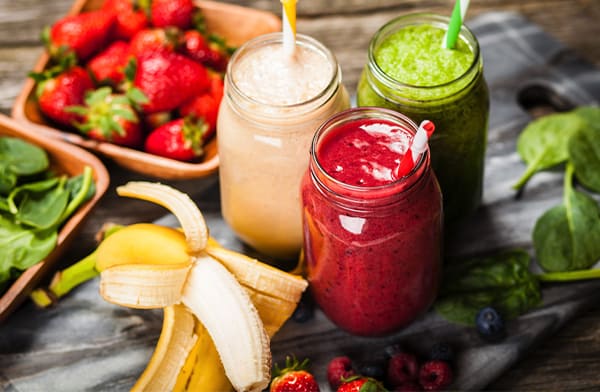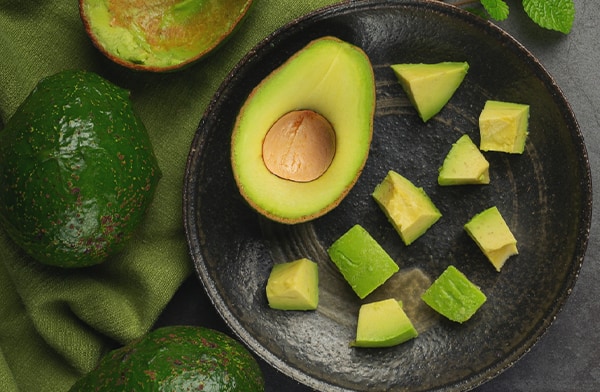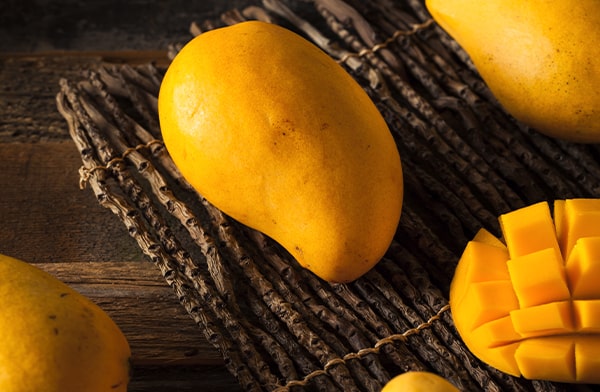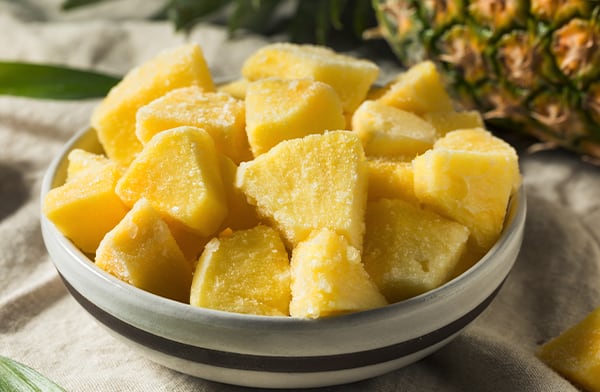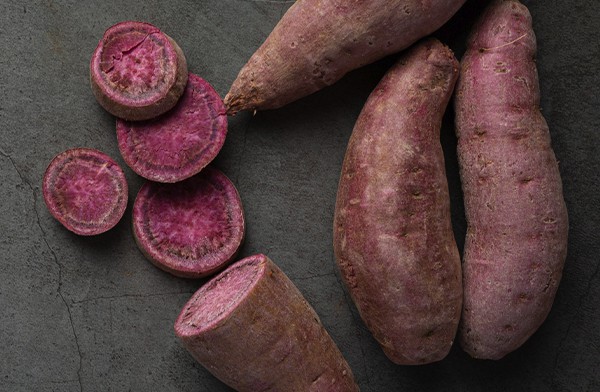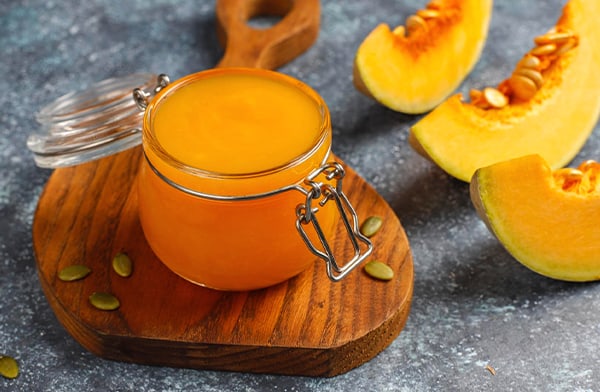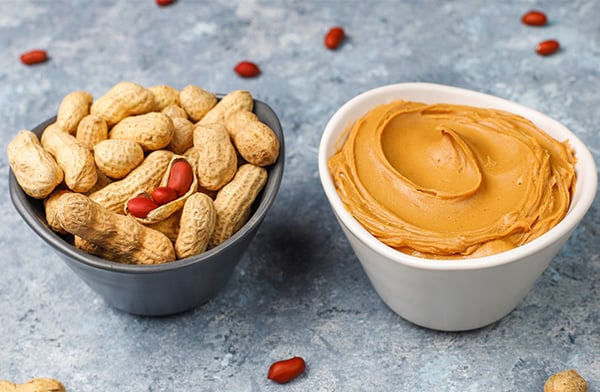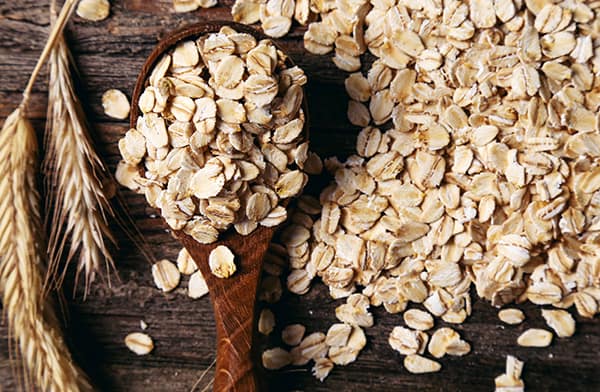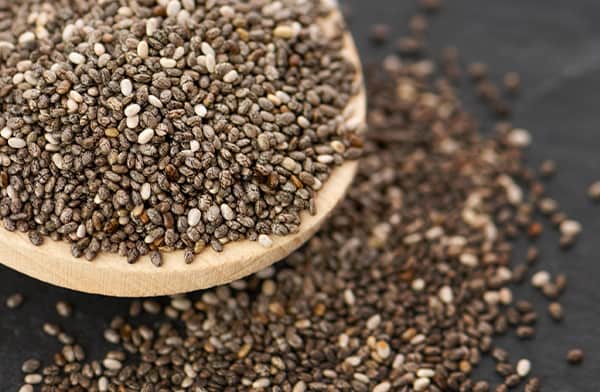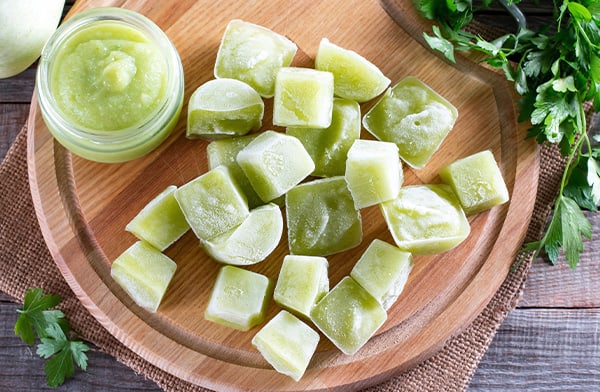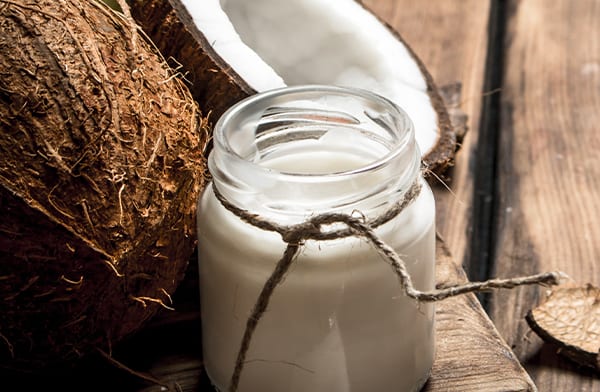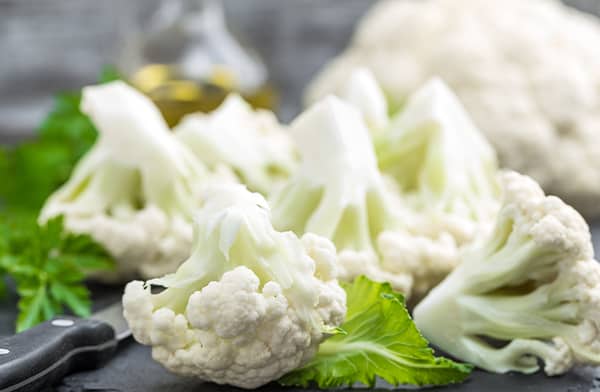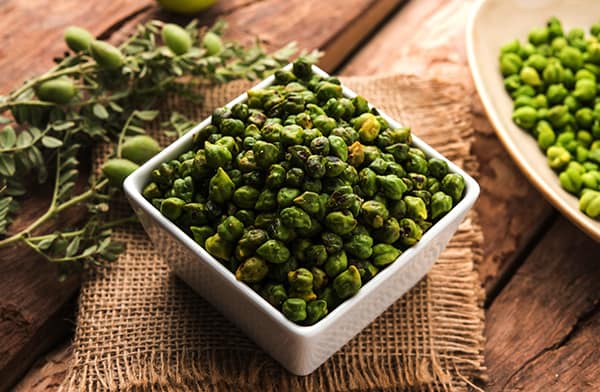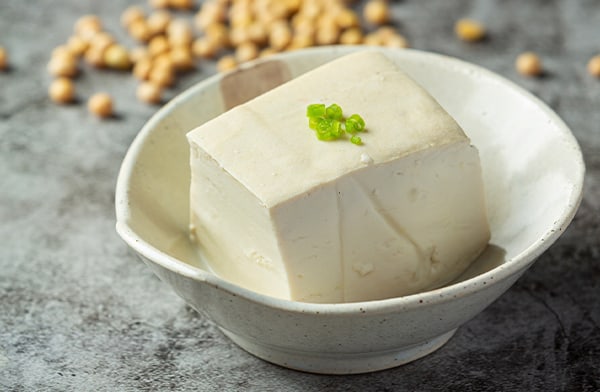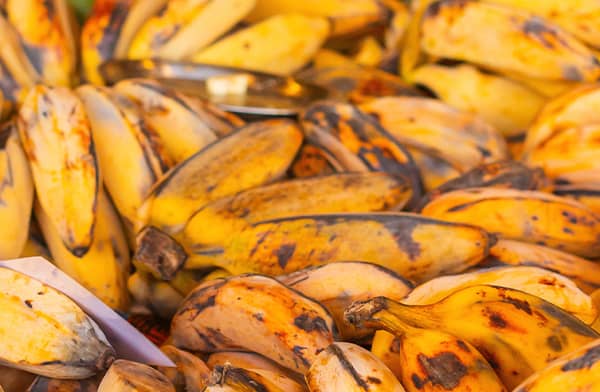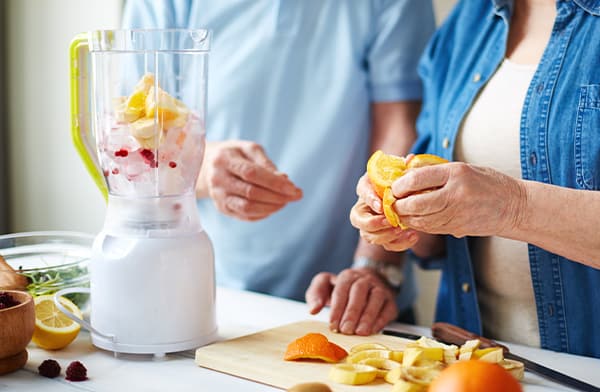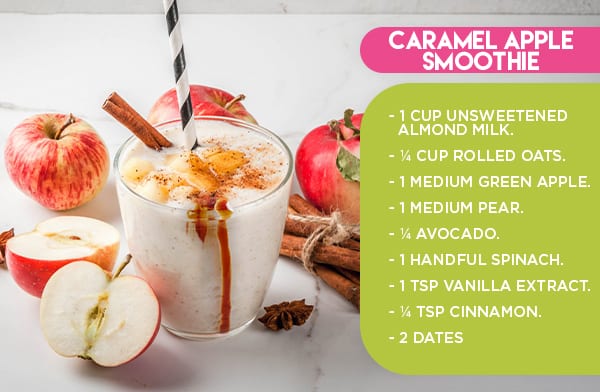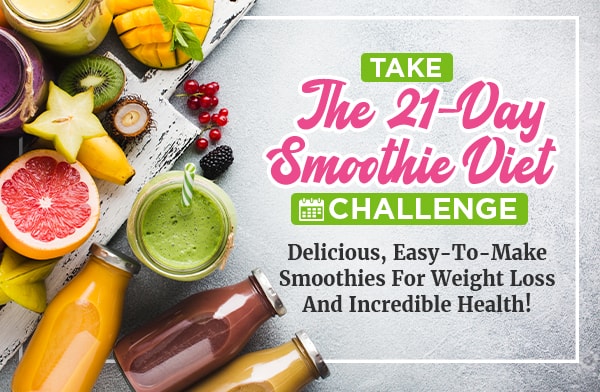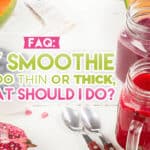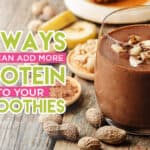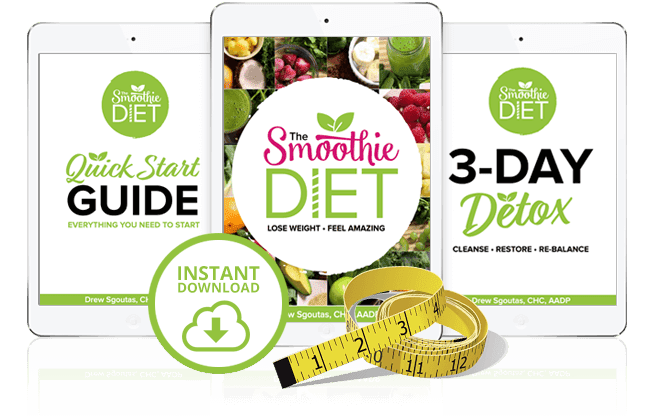How to Make a Smoothie Taste Great Without Banana
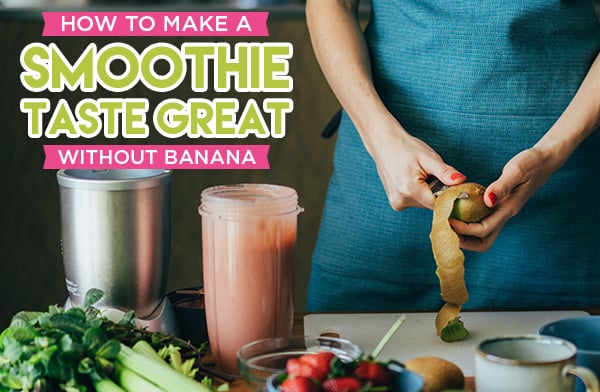
Bananas are one of the core ingredients in many smoothies, from the mixtures you get at a smoothie bar to the recipes you make at home. The thing is, many people don’t actually like them. Banana can have a fairly strong flavor and add a texture some people don’t enjoy. Plus, there are dietary reasons to avoid them, particularly for people who have to limit their potassium intake (like those with chronic kidney disease).
Luckily, smoothies don’t require bananas. There are plenty of ways you can make a smoothie without bananas and still have it turn out rich, creamy, and tasty. It all comes down to replacement ingredients.
Alternatives to Bananas in Smoothies
There are two ways you can make a smoothie without bananas.
- You can use a different ingredient to mimic the qualities of the banana that you like.
- You can use a recipe that doesn’t require a banana.
The first option is where we’ll start today. If you like some of the qualities of banana – such as the creaminess or the richness of the smoothie – you can get it without bananas by using different ingredients. So, let’s talk about substitutions.
Avocado
Avocado might seem like a strange ingredient for a smoothie, but trust me, it’s great. Avocado is a healthy fat, full of great nutrients to help keep you healthy. It also works well for adding creaminess to a smoothie while keeping a neutral flavor. Avocados aren’t a terribly strong flavor compared to many of the other smoothie ingredients, so it’s easy to blend into the background. The only thing you might miss by swapping avocado for banana is a little of the sweetness a ripe banana brings to the table. Well, that and the banana flavor.
Mango
Mango has a relatively neutral flavor, though it can stand out with that tropical tang for some people. A cup of frozen mango will replace a banana in a smoothie recipe. It can give you the same sort of creamy texture as banana, but without the banana flavor. The trick is to find mangos that are just ripe enough but not too ripe. You don’t want an overly juicy fruit for this purpose.
Frozen Pineapple
Pineapple is a great fruit full of nutrients. It’s sweet, tangy, and it’s delicious; what’s not to love? The trick with smoothies is to use frozen pineapple instead of banana. It’s also best if you use a fresh pineapple you prepare and freeze yourself. Canned pineapple often has added sugar, added water or juice, and added preservatives. You can also buy pre-frozen pineapple; just avoid the canned stuff as much as possible. It’s delicious, but not for smoothies. If your pineapple isn’t frozen, your smoothies won’t be as thick and creamy.
Sweet Potato
Believe it or not, sweet potato can be a great added ingredient for a smoothie. It’s sweet, but not too sweet, and doesn’t have that strong a flavor, so it won’t dominate your smoothie. It adds richness and a certain earthy flavor, so it goes great with green smoothies, as well as smoothies with chocolate, berry, and citrus bases.
Make sure you cook your sweet potato first. Raw sweet potato isn’t going to blend up properly, and you’ll end up with a starchy mess.
Pumpkin Puree
Pumpkin puree is usually reserved for October and November holiday treats, but it’s actually a fantastic addition to smoothies as well. Pumpkin actually tastes a lot like sweet potato – or should I say that sweet potato tastes a lot like pumpkin? – and serves a similar purpose. A good pumpkin puree is healthy and low-calorie, and it adds a deep creaminess and earthy flavor to your smoothie.
You can also choose whether you want to cover up or accentuate your pumpkin flavor. Mix it with chocolate, berries, or citrus, just like sweet potato. Or, mix it with spices like cinnamon and a chocolate smoothie base for more of a pumpkin spice smoothie. You’ll be amazed you’re not drinking a dessert!
Nut Butters
One of my favorite ways to thicken up a smoothie and add creaminess to it is to use nut butter. Peanut butter is great, but you can also use cashew or almond butter as well. Cashews are actually one of the best; they’re high in protein, they’re delicious, and they’re healthy. Any nut butter will work well for adding creaminess.
Nut butter can also be the star of the show for certain smoothie recipes. If you’ve ever wanted a smoothie that tastes like you’re drinking a peanut butter cup, you can do it with peanut butter, cacao nibs, and some standard smoothie ingredients. Nut butter is actually a great and flexible ingredient!
Oats
Oats – specifically rolled oats – are a great thickener for smoothies. When you prepare them properly, they do a great job at adding creaminess too. I recommend soaking them in a liquid, like the milk or yogurt you want to add to your smoothie overnight. This softens them up as they absorb moisture from the liquid and makes them blend more easily into your smoothie. Otherwise, you might end up with some chewy bits and a dry texture unless you over-blend your smoothie.
Oats are also a great source of fiber. Fiber is prebiotic, meaning that it helps your gut biome thrive, and they’re great as an appetite suppressant. It helps you feel full longer, reduces your urge to snack, and helps you stay hydrated. Really, they’re a near-perfect ingredient for any smoothie.
Chia Seeds
Chia seeds are a tiny superfood packed with nutrients. They’re also excellent for a smoothie if you let them soak in it for a few minutes. They absorb liquid and swell up while softening, so they end up with a gel-like texture. You can add 1-2 tablespoons of chia seeds to any smoothie, let them soak a bit, then blend them up for a great creamy texture with very little added flavor.
The trick here is that you don’t want to use chia seeds in a smoothie you intend to store in the fridge. They thicken your smoothie, and they keep thickening it. If you let it sit overnight, by the morning, your smoothie will have the consistency of pudding. If you like that, great, enjoy it. If you want a smoothie you can drink, though, don’t let it sit too long.
Frozen Zucchini
Zucchini has a strong taste of the vegetable, and you might think that’s not great for a smoothie unless it’s a green smoothie recipe. The truth is, freezing a zucchini helps a lot with this. Freeze the veggie, and it will lose a lot of the taste while retaining the nutrients. Frozen zucchini can round out several smoothies and help you get a nice and creamy texture from your drink. You can also use cucumber for a sweeter variation on the same technique.
Coconut Cream
Coconut cream is different from coconut milk or coconut water. It’s a lot thicker and creamier, which is why it’s a great banana replacement. The only caveat is that, unlike many of the other options on this list, coconut cream is a strong flavor. It works well with tropical fruit blends and some veggie smoothie recipes, but it doesn’t mesh with everything. Make sure you’ve thought about the flavor profile of your smoothie before adding coconut.
Cauliflower
The cruciferous cauliflower is certainly an unorthodox smoothie ingredient. But have you ever noticed how many substitutes there are in vegan meals using cauliflower? It replaces rice, potatoes, and even bread in some cases. How does it do it? When cooked and blended up, it has an excellent, smooth texture with very little flavor. While this isn’t great for eating on its own, it’s excellent for mixing into other foods.
Cook your cauliflower by steaming it to avoid adding too much of a cooked veggie flavor to your smoothies unless you like that flavor. Mash or blend it up into your smoothie, and you’re good to go.
Beans
Beans can be great for a smoothie if you choose the right ones. There are dozens of different kinds of beans, though, so how do you pick? I recommend garbanzo beans or cannellini beans since they have the most neutral flavors.
You have two options here. You can either buy canned beans, or you can buy dried beans. Canned beans are often preserved in a salty fluid, so try to buy a low-sodium or no-salt-added brand and rinse them before adding them.
Dried beans don’t have the salt issue, but you do need to soak them in water for at least a few hours before you can blend them; otherwise, they won’t blend up well and won’t help your smoothie’s flavor or texture.
Silken Tofu
Tofu is a soybean product, so it’s relatively healthy. It’s also almost flavorless, which is why it’s so often a staple of vegetarian cuisine. You can cook it and prepare it in a million different ways, and it can take on many flavors that you want it to have. Adding it to a smoothie gives your smoothie a richer, creamier texture and taste without adding any flavors of its own. It’s perfect if you like the creaminess of the banana but don’t like the flavor of the fruit.
Other Bananas
Did you know that there are over a dozen different varieties of banana out there? The common banana you find in the grocery store is only common because it’s the easiest one to grow in mass quantities. Other bananas have distinctly different flavors and can still add a rich creaminess to your smoothies. If you’ve never given them a try, you might be able to hunt some down or order some online to give them a try.
Smoothie Recipe Ideas
It’s one thing to tell you to swap out bananas for a different ingredient, but that’s not always the best option. You’ll change the flavor balance, and you might not like the results. Luckily, smoothies are hugely varied, so you have a ton of different options for banana-free smoothies.
First of all, I highly recommend checking out the Smoothie Diet. My program contains over a dozen different smoothie recipes, some of which don’t call for a banana at all.
Here’s a recipe template that you can start with for a banana-free smoothie:
Caramel Apple Smoothie
- 1 Cup unsweetened almond milk.
- ¼ Cup rolled oats.
- 1 Medium green apple.
- 1 Medium pear.
- ¼ Avocado.
- 1 Handful spinach.
- 1 Tsp Vanilla extract.
- ¼ Tsp cinnamon.
- 2 Dates
Add the almond milk, dates, and oats to your blender and let them soak for a few minutes. Optionally, put this mixture in the fridge for an hour or two to fully soak the oats. Then, add the spinach and avocado, and blend until mixed. Finally, add the rest of the ingredients and blend until smooth. Pour into your favorite smoothie glass and enjoy.
You have a lot of options for adjusting this recipe, too. Want it sweeter? Add another date or some honey. Want it creamier? Add more oats, or use one of the many ingredients above to help add a creamier texture. Don’t want spinach? Try a different green, like chard or bok choy. The smoothie world is your oyster.
Other Recipe Ideas
If you’ve already tried out the recipes in the Smoothie Diet, here are a few other resources you can use for no-banana smoothies.
- 8 Recipes from Wholefully
- 10 Recipes from A Sweet Pea Chef
- 5 Recipes from Beauty Bites
- 6 Recipes from Kitchn
And, of course, all of your favorite recipe sites like AllRecipes or Food.com are sure to have their share of ideas. There are so many great ingredients for smoothies, and they all taste great together that you can practically just mix anything you like into something that tastes good.
Once again, though, I recommend the Smoothie Diet. My program isn’t just engineered to give you smoothies that taste good; it’s designed to help you lose weight, kick the junk food addiction, and get healthier, all in just a few weeks. Take the challenge!
Have any additional ingredients you already use to replace bananas? Let us know what they are down in the comments section! If you have any additional comments or questions regarding the Smoothie Diet or anything else smoothie-related, feel free to leave those down there as well!

